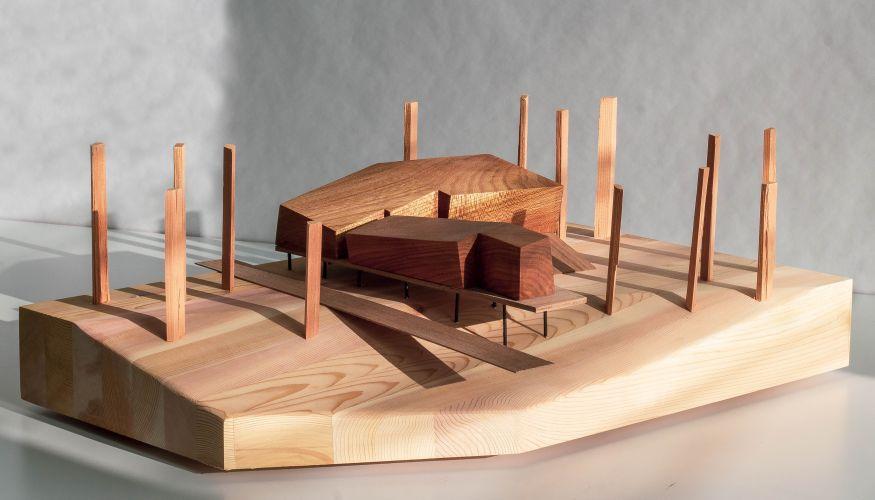What Role Does Architecture Play In Preserving Indigenous Architectural Practices?

Indigenous culture and traditions have long been revered for their beauty and significance, and lately, these elements have made their way into the world of architecture. Many architects are looking to the designs and themes found in Indigenous culture to inspire their work, and the results are stunning. In this article, we'll explore some of the ways that Indigenous culture is inspiring architecture in new and exciting ways.
A Look at Indigenous Inspired Architecture
Indigenous inspired architecture is a relatively new concept, but it's quickly gaining ground in the world of design. Many architects are using Indigenous designs, such as totem poles and longhouses, to create beautiful and unique structures that pay homage to the history and culture of Indigenous peoples.
Point 1: The Use of Natural Materials
One of the most notable features of Indigenous inspired architecture is the use of natural materials. This includes materials like wood, stone, and earth, which are used to create buildings that blend seamlessly into their surroundings. By using natural materials, architects are able to create buildings that are not only visually stunning but also environmentally friendly.
One example of Indigenous inspired architecture is the UBC First Nations House of Learning building in Vancouver. This building was constructed using materials like cedar, fir, and stone to create a structure that was not only beautiful but also sustainable.
Point 2: The Importance of Tradition
Indigenous culture places a strong emphasis on tradition, and this is reflected in the architecture that is inspired by it. Many architects are looking to traditional Indigenous designs and styles to create buildings that are both innovative and respectful of the past.
For example, the design of the Squamish Lil'wat Cultural Centre in Whistler, BC was inspired by the longhouse-style architecture of the Squamish and Lil'wat nations. The building features traditional designs like a curved roof and cedar shingles, but also incorporates modern features like large windows and contemporary lighting.
Point 3: A Connection to Nature
Indigenous inspired architecture often emphasizes a connection to nature. This means that buildings are designed to blend in with the natural landscape and create a sense of harmony with the environment.
The Nk'Mip Desert Cultural Centre in British Columbia is a great example of this. This building was designed to blend in with the surrounding desert landscape and features elements like earthy tones and a rusted metal exterior to create a natural, seamless look.
Point 4: The Role of Community
In many Indigenous cultures, community is a central aspect of daily life. This is reflected in the architecture that is inspired by these cultures, as many buildings are designed to promote a sense of community and togetherness.
The Thunderbird House in Winnipeg, Manitoba is an excellent example of this. This building was designed to serve as a gathering place for the local Indigenous community and features elements like a large central hall and traditional healing rooms.
Point 5: A Celebration of Cultural Identity
Indigenous inspired architecture often celebrates cultural identity and the unique history and traditions of Indigenous peoples. This is reflected in the design of many Indigenous inspired buildings, which often incorporate symbols and elements that are significant to Indigenous cultures.
The First People's House at the University of Victoria is a great example of this. This building was designed to celebrate Indigenous culture and incorporates elements like a traditional sweat lodge, a cedar-walled longhouse, and a smudging room.
FAQ: Indigenous Inspired Architecture
Q: What is Indigenous inspired architecture?
A: Indigenous inspired architecture is a genre of architecture that draws inspiration from Indigenous culture and traditions, often incorporating natural materials and traditional designs.
Q: What are some examples of Indigenous inspired architecture?
A: Examples of Indigenous inspired architecture include the UBC First Nations House of Learning building, the Squamish Lil'wat Cultural Centre, the Nk'Mip Desert Cultural Centre, the Thunderbird House, and the First People's House at the University of Victoria.
Q: What are the key features of Indigenous inspired architecture?
A: Key features of Indigenous inspired architecture include the use of natural materials, an emphasis on tradition, a connection to nature, a focus on community, and a celebration of cultural identity.
Conclusion
Indigenous inspired architecture is a fascinating and growing field that offers a unique and innovative take on the world of architecture. By drawing inspiration from the rich traditions and culture of Indigenous peoples, architects are creating buildings that are not only beautiful but also respectful of the environment and the past. Whether you're interested in natural building materials, traditional designs, or community-focused architecture, Indigenous inspired architecture has something for everyone. So why not take a closer look and see what this exciting field has to offer?




Post a Comment for "What Role Does Architecture Play In Preserving Indigenous Architectural Practices?"